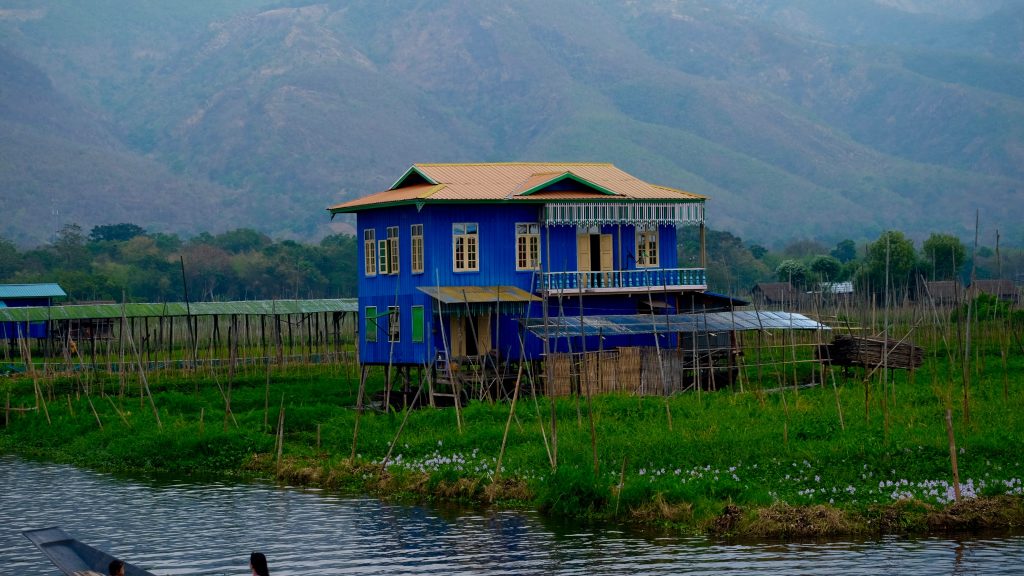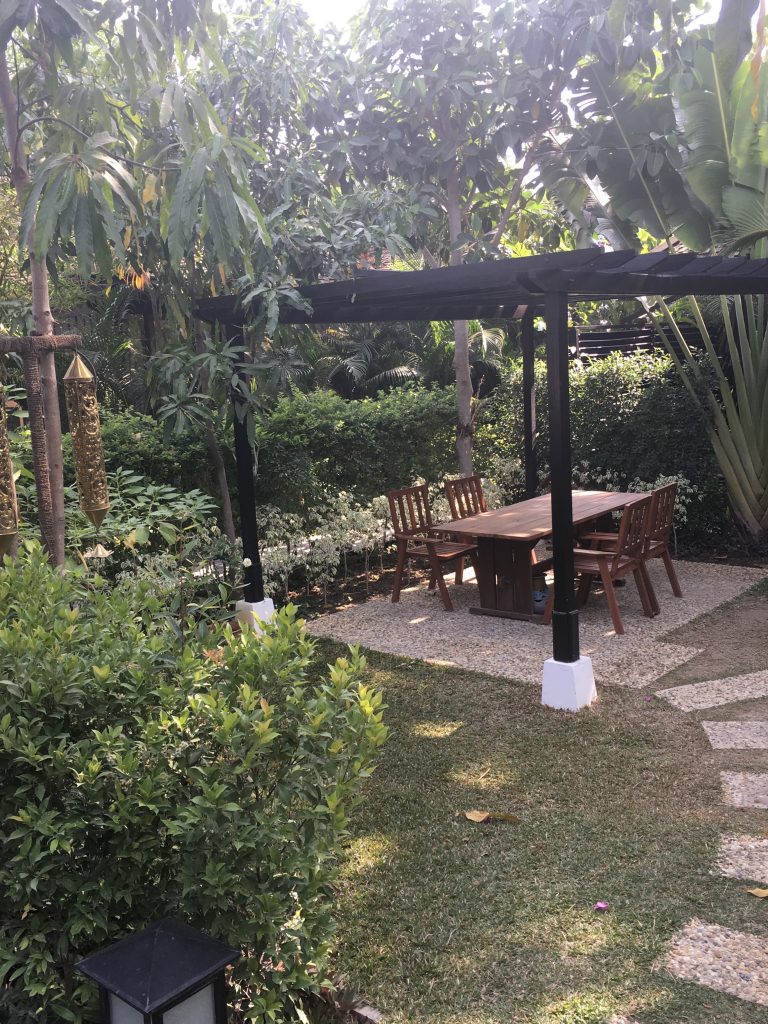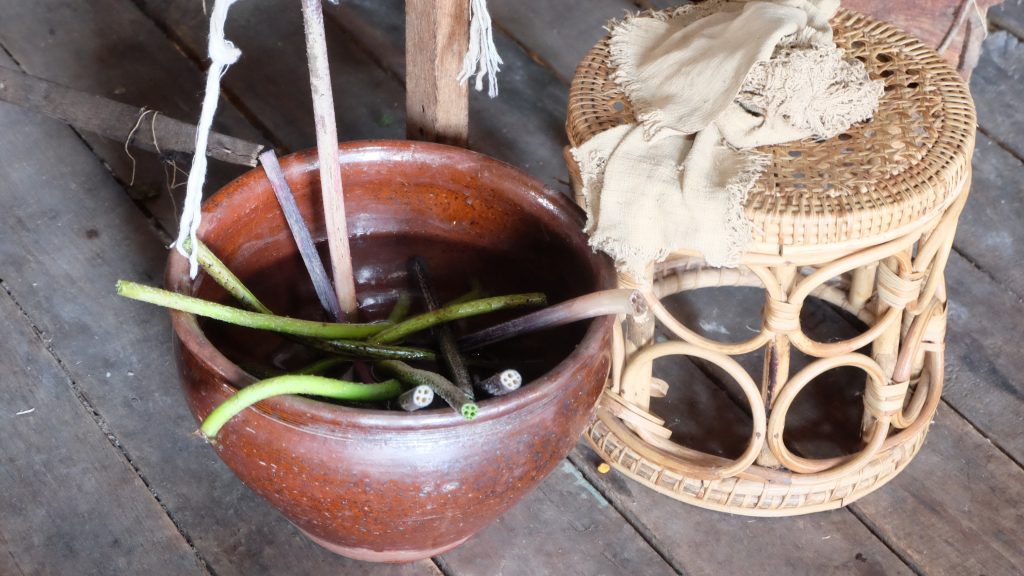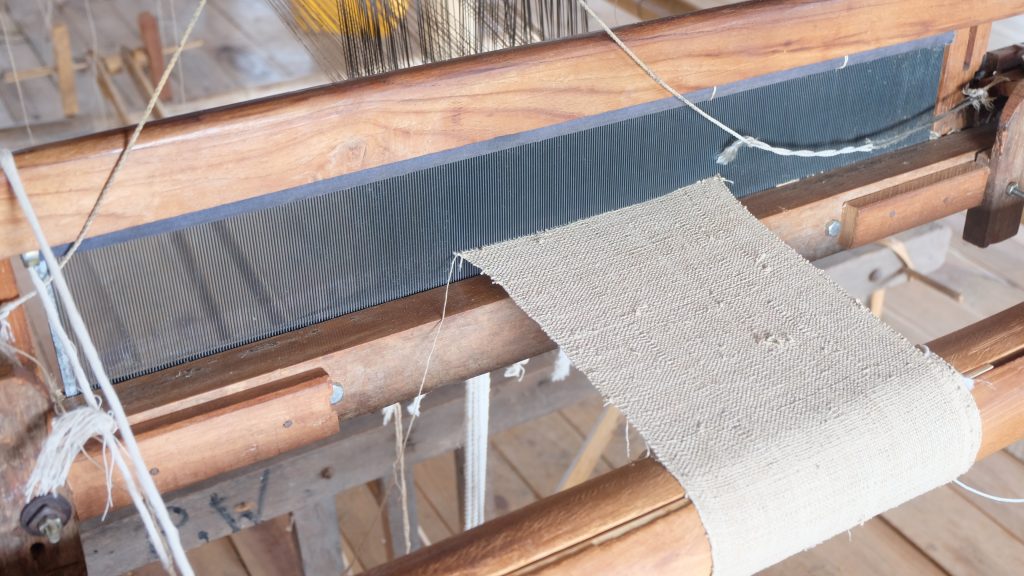Journey with us as we visit Inle Lake, located in the Shan Hills of Myanmar or the country previously known as Burma
We started our trip in Bangkok, although we obtained our visa to enter Myanmar in the US before departing. After several days in Bangkok, we boarded a flight with Thai Airways at BKK airport, and within an hour landed in Rangoon (RGN). With a little over two hours until our flight departed for Heho Airport (HEH), the closest airport to Inle Lake, we navigated our way from the international terminal to the domestic terminal-which was quite easy since the airport offered a free shuttle- and settled in for a great cup of hot Burmese tea.
We soon boarded our KBZ airways flight and within the hour, landed at HEH airport. As we had done in the past, we arranged for our hotel to pick us up. Our ride was waiting for us with our names written on a whiteboard to make life easy. The HEH airport is small and checked luggage arrives rather quickly, so in no time at all, we were on our way. Normally the ride to Nyaungshwe Village take about 45 minutes, but we happened to arrive during the water festival so our driver was forced to drive slow and carefully navigate the crowds on the roads who were joyously throwing buckets of water on each other and all passing vehicles. It was a fun and unexpected experience. Clearly, everyone was happy and having a delightful time.
Upon arriving at the beautiful LaMaison Birmane Boutique Hotel, we were greeted like special guests and arrangements were soon underway for our boat trip to In Paw Khon, the floating village where you can still experience the techniques for extracting and weaving lotus fibers. Here is where the story begins:
Our Lotus fiber is grown and harvested in the floating villages of Inle Lake, Myanmar.

Inle Lake floating village, Inle Lake, Myanmar
This craft has been in place for over a century but relatively unknown to the world outside Myanmar. The process is tedious and begins with lotus fiber being extracted by hands, skillfully taking a handful of stems, laying them on a wooden table and gently slicing the outside stems to reveal the fibers inside. With a twisting motion, the ladies then pull the cut stems in opposite directions in a twisting motion to expose the fibers. The fibers are then rolled together on the wooden table to create one thread. This extraction process must be done within 24 hours of harvesting. Once extracted, the threads are then washed, dried, tied together end-to-end, and woven on handlooms. The lotus fibers are so delicate that no machine can effectively weave them into the fabric. The finished textile looks similar to raw silk, although it maintains the slight odor of the lotus flower.
It takes 32,000 lotus stems to make one meter or 1.09 yards of fabric.
Lotus fiber weaving is an art form that originated in Myanmar (Burma) centuries ago. This textile was originally used to make robes for Buddhist monks.
In Buddhism, the lotus is a very respected and sacred symbol. The roots of the flower live in muddy waters and in the morning a beautiful, flawless blossom appears, showing no signs of the environment it came from. Although the lotus blossom appears to be fragile, it is flexible and strong and when it opens to the world, it is a most beautiful and perfect flower. The Buddhist believe this process mimics the path of the soul as it rises from the earth into enlightenment. It is symbolic of every man and woman’s ability to rise above their circumstances, no matter their life situation.
The lotus plant is a symbol of purity, creativity, and enlightenment. It is believed to have healing properties and wearing a fabric made from lotus fibers is believed to make a person feel calm, peaceful, and meditative. In some cases, the fiber is believed to cure headaches, heart ailments, and even asthma.
Is there a disadvantage associated with this exotic fiber? Yes… PRICE! As you have just learned, the process of growing, extracting, and weaving these fibers is extremely labor-intensive. There are no shortcuts for gathering and weaving these scared fibers, thus the price is more than we are used to paying for other organic textiles. However, this is the rarest of all!
A historical note: Prior to September 2016, the United States had sanctions in place against imports from Myanmar (Burma). Therefore the arrival of lotus fiber into the US is relatively new. In fact, most US shoppers have never heard of this 100% organic and eco-friendly textile!
NOTE of interest: In Insight Guides book on BURMA Myanmar, copyrighted in 1997, there is no reference to lotus weaving on Inle Lake.








This is great information. Thank you for exposing me to the rarity of lotus fiber.
James: Thank you for attending our event on Saturday! I’m so glad you enjoyed the presentation and the blog!
Terrific article! That is the kind of information that
are meant to be shared across the net. Shame on the seek engines for now not
positioning this publish upper! Come on over and seek advice from my site .
Thanks =)
Thank you for your feedback! I checked out your website and it’s lovely. My best to you!
Interested to purchase Lotus fiber in quantity from you. Please contact me.
Richard Dash
Dash Hemp Santa Cruz
http://www.dashhemp.com
Hello Richard. I recently sent you the cost for lotus fiber. Please let me know if you remain interested. Thank you.
Hii this is Shravani, I am a fashion Designing Student . working on a project regarding the Lotus Yarn, I want to buy the lotus yarn, can you let me know whether it is availabe.
Hello.
If you are interested in purchasing lotus thread, we have it available for sale by the yard. You can place your order on our website.
Thank you.